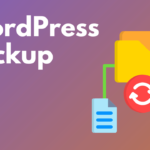Ready to launch or scale your ecommerce business? Navigating the digital landscape requires the right tools and knowledge. Luckily, a wealth of resources are available to help you build, manage, and grow your online store. This guide will explore essential ecommerce website resources, covering everything from platform selection and design to marketing and customer service, equipping you with the information you need to succeed.
Ecommerce Platform Resources
Choosing the right ecommerce platform is a crucial first step. The platform you select will impact everything from store design to payment processing and inventory management.
All-in-One Platforms
These platforms handle everything from hosting to website building, making them ideal for beginners and businesses looking for a simplified solution.
- Shopify: A popular choice known for its ease of use, extensive app store, and robust marketing features. Shopify powers millions of businesses worldwide.
Example: The Shopify App Store offers a wide range of plugins to extend functionality, such as dropshipping integrations, email marketing automation, and advanced SEO tools.
- BigCommerce: Designed for scalability and enterprise-level businesses, offering advanced features and customization options.
Example: BigCommerce provides built-in tools for multi-channel selling, allowing you to manage inventory and orders across multiple platforms like Amazon and eBay.
- Squarespace: Known for its beautiful design templates and user-friendly interface, perfect for businesses focused on visual appeal.
Example: Squarespace’s built-in SEO tools help improve your website’s visibility in search engine results, crucial for attracting organic traffic.
Open-Source Platforms
Offering maximum flexibility and customization, open-source platforms require more technical expertise but allow for greater control.
- WooCommerce: A WordPress plugin that transforms your website into an online store. Requires a WordPress website and hosting.
Example: WooCommerce’s open-source nature allows for extensive customization through themes and plugins, enabling you to create a unique and tailored online shopping experience.
- Magento (Adobe Commerce): A powerful and scalable platform designed for large enterprises with complex needs.
Example: Magento offers advanced features like segmentation, personalization, and loyalty programs to improve customer engagement and drive sales.
- PrestaShop: A user-friendly open-source platform with a strong focus on product management and international selling.
Example: PrestaShop provides extensive tools for managing product variations, attributes, and combinations, making it ideal for businesses with diverse product catalogs.
Key Considerations When Choosing a Platform:
- Budget: Consider setup costs, monthly fees, transaction fees, and app/plugin costs.
- Technical Skills: Assess your technical abilities or the availability of technical support.
- Scalability: Choose a platform that can grow with your business.
- Features: Determine the features you need, such as payment gateways, shipping integrations, and marketing tools.
Design and User Experience (UX) Resources
A visually appealing and user-friendly website is crucial for attracting and retaining customers.
Website Design Tools
These tools help you create a professional-looking website without extensive coding knowledge.
- Canva: A drag-and-drop design tool perfect for creating banners, product images, social media graphics, and other visual assets.
Example: Use Canva to create eye-catching product mockups and promotional banners to enhance your product pages and attract attention.
- Adobe Photoshop: The industry-standard image editing software for advanced image manipulation and design.
Example: Photoshop can be used to retouch product photos, remove backgrounds, and create stunning visual effects to showcase your products in the best light.
- Figma: A collaborative design tool used by UX/UI designers to create website mockups and prototypes.
Example: Use Figma to design and test different website layouts and user flows before implementing them on your live website.
UX Best Practices Resources
Understanding UX principles will help you create a website that is easy to navigate and enjoyable to use.
- Nielsen Norman Group: A leading research firm specializing in user experience, providing articles, reports, and training on UX best practices.
Example: Their website offers articles on topics like website navigation, product page design, and checkout flow optimization.
- Baymard Institute: An independent research firm that conducts research on ecommerce UX, providing benchmarks and guidelines for optimizing the online shopping experience.
Example: They offer in-depth research reports on topics like cart abandonment, form design, and product filtering.
- Google’s PageSpeed Insights: A tool that analyzes your website’s speed and provides recommendations for improving performance.
Example: Use PageSpeed Insights to identify and fix issues that are slowing down your website, such as large images, unoptimized code, and slow server response times.
Actionable UX Tips:
- Simplify Navigation: Make it easy for users to find what they’re looking for.
- Optimize for Mobile: Ensure your website is responsive and looks good on all devices. 61% of mobile users are unlikely to return to a mobile website they had trouble accessing.
- Use High-Quality Images: Showcase your products with clear and attractive visuals.
- Streamline the Checkout Process: Reduce friction and make it easy for customers to complete their purchase.
Marketing and SEO Resources
Driving traffic to your ecommerce website requires a strategic marketing plan and effective SEO practices.
SEO Tools
These tools help you optimize your website for search engines and track your progress.
- Google Search Console: A free tool from Google that provides insights into your website’s performance in search results.
Example: Use Google Search Console to submit your sitemap, track your keyword rankings, and identify crawl errors.
- SEMrush: A comprehensive SEO tool that offers keyword research, competitor analysis, and site auditing features.
Example: SEMrush can be used to identify high-volume, low-competition keywords to target in your content and product descriptions.
- Ahrefs: Another popular SEO tool known for its backlink analysis and keyword research capabilities.
Example: Ahrefs allows you to analyze your competitors’ backlinks to identify opportunities to build your own link profile.
Marketing Automation Platforms
Automating marketing tasks can save time and improve efficiency.
- Klaviyo: An email marketing platform specifically designed for ecommerce, offering advanced segmentation and personalization features.
Example: Use Klaviyo to create automated email flows, such as welcome emails, abandoned cart reminders, and post-purchase follow-ups.
- Mailchimp: A popular email marketing platform with a range of features for creating and sending email campaigns.
Example: Mailchimp offers templates and tools for creating visually appealing email newsletters and promotional campaigns.
- HubSpot: A comprehensive marketing automation platform that includes features for email marketing, CRM, and social media management.
Example: HubSpot allows you to track customer interactions across multiple channels and personalize your marketing messages based on their behavior.
Social Media Management Tools
Managing your social media presence can be simplified with these tools.
- Buffer: A social media management platform that allows you to schedule posts, track analytics, and engage with your audience.
Example: Use Buffer to schedule social media posts in advance and track the performance of your campaigns.
- Hootsuite: Another popular social media management platform that offers similar features to Buffer.
Example: Hootsuite allows you to manage multiple social media accounts from a single dashboard and monitor social media conversations.
Paid Advertising Platforms
Paid advertising can be an effective way to drive targeted traffic to your website.
- Google Ads: A pay-per-click (PPC) advertising platform that allows you to display ads on Google search results and other websites.
Example: Use Google Ads to target specific keywords and demographics to reach potential customers who are actively searching for your products.
- Facebook Ads: A social media advertising platform that allows you to target users based on their interests, demographics, and behaviors.
Example: Facebook Ads can be used to promote your products to a highly targeted audience on Facebook and Instagram.
Customer Service Resources
Providing excellent customer service is essential for building customer loyalty and driving repeat business.
Help Desk Software
Help desk software helps you manage customer inquiries and provide timely support.
- Zendesk: A popular help desk platform that offers features for ticketing, live chat, and knowledge base management.
Example: Zendesk allows you to track customer issues, assign them to agents, and resolve them efficiently.
- Freshdesk: Another popular help desk platform with a range of features for managing customer support.
Example: Freshdesk offers features like automated ticketing, knowledge base articles, and self-service portals.
- Help Scout: A user-friendly help desk platform designed for small businesses.
Example: Help Scout offers a simple and intuitive interface for managing customer inquiries and providing personalized support.
Live Chat Tools
Live chat allows you to provide instant support to customers on your website.
- Tawk.to: A free live chat platform that offers a range of features for engaging with customers in real-time.
Example: Use Tawk.to to answer customer questions, provide product recommendations, and resolve issues quickly.
- Intercom: A customer messaging platform that offers features for live chat, email marketing, and customer support.
Example: Intercom allows you to engage with customers throughout their journey, from initial website visit to post-purchase support.
Knowledge Base Platforms
A knowledge base helps customers find answers to their questions independently.
- HelpDocs: A platform for creating and managing a knowledge base with articles, FAQs, and tutorials.
Example: HelpDocs can be used to create a comprehensive knowledge base that addresses common customer questions and issues.
- Notion: A versatile workspace that can be used to create and manage a knowledge base, as well as other types of content.
Example:* Use Notion to create a collaborative knowledge base that is easily accessible to your customers and internal teams.
Actionable Customer Service Tips:
- Respond Quickly: Respond to customer inquiries promptly. 42% of customers expect a response within one hour.
- Personalize Interactions: Address customers by name and tailor your responses to their specific needs.
- Be Empathetic: Show customers that you understand their concerns and are committed to helping them.
- Offer Multiple Channels: Provide support through email, live chat, phone, and social media.
Conclusion
Navigating the world of ecommerce can feel overwhelming, but with the right resources at your disposal, you can build a thriving online business. From selecting the ideal platform to optimizing your website for conversions and providing excellent customer service, the resources outlined above will empower you to make informed decisions and achieve your ecommerce goals. Remember to continuously learn and adapt to the ever-changing digital landscape to stay ahead of the competition and provide the best possible experience for your customers.


